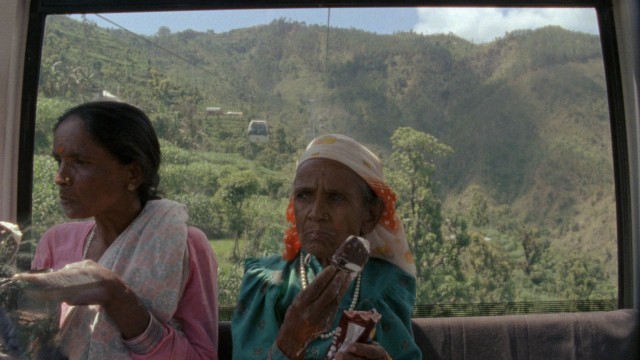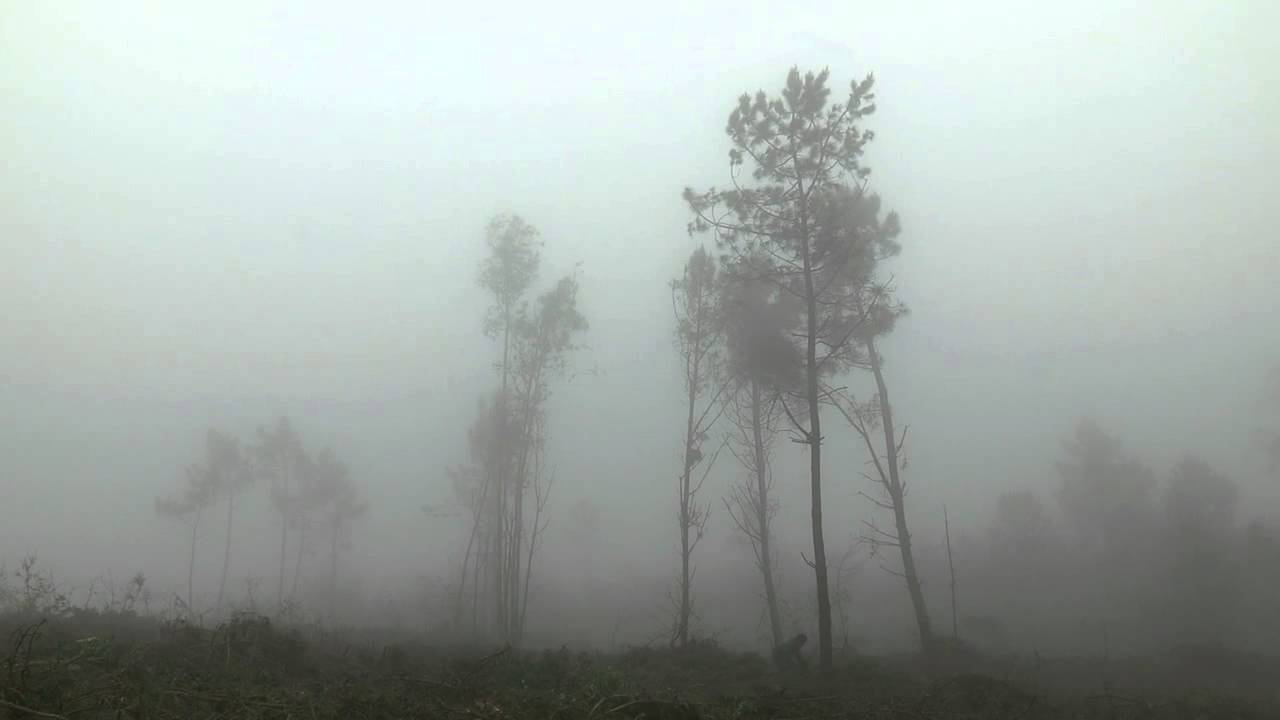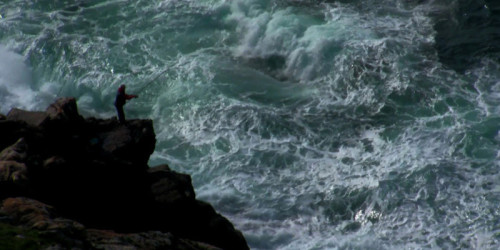NYFF: 'Manakamana' and 'Costa da Morte'
 Friday, October 11, 2013 at 10:31AM
Friday, October 11, 2013 at 10:31AM The New York Film Festival (Sept. 27-Oct 14) is in its last few days; here's Glenn's thoughts on Manakamana and Costa de Morte.
I admire the NYFF’s commitment to what they deem the “avant-garde”. Extensive programming in this sidebar make it a rarity amongst modern high profile festivals. NYFF features no “midnight madness” section for horror, and comedies were few and far between, but if you’re interested in movies that the general public consider “boring” and “strange” then NYFF is for you. I unfortunately did not get to catch more than a very small sampling, but what I did manage to see was enticing and illuminating.

Two of these that make a compelling double feature are Manakamana and Costa da Morte? Both are very sparingly shot examinations of a natural landscape that has likely never seen before by most western audiences. The former, isn't actually a part from the avant-garde showcase, although it really ought to be, comes from the Sensory Ethnography Lab, responsible for such daring and captivating cinema as Sweetgrass and this year’s Leviathan. From directors Stephanie Spay and Pacho Velez, Manakamana lacks the immediate gut-punch reaction that those other two had. It works more or less like an omnibus film, featuring eleven mini-films taken from within the cablecars that take worshippers to the titular mountaintop temple.
As a cross-section examination of Nepalese society it’s fascinating, but like any other film of this kind, the eleven sequences that make up Manakana’s 117-minute runtime vary in interest. Each plays out in real time as the cablecar goes up and cablecar goes down and at roughly eight and a half minutes each, that leaves a lot of time for mental wandering. One sequence in which two older ladies grapple with a particularly messy ice-cream situation is a treat, so too is the one involving three young rock musicians and another sacrificial goats taking the place of human cargo. They’re all fine examples of what I presume the film is attempting to achieve. However, there are far too many segments that go by minus anything of any interest happening. It doesn’t take long for the audience to get clued in to the beats and rhythms of the film from which it never deviates. The viewer’s attention will likely shift and sway as much as the cablecar, its success to the individual dictated by their ability to remain focused and attentive, a challenge to perhaps even the most ardent of cinemagoers.

More successful is Lois Patiño’s Costa da Morte. Translated literally as “coast of death”, this is the flipside to Manakamana. More focused on the nature rather than the people that inhabit it, Costa da Morte isn’t as harsh as the title would suggest, although at times it is as if the nature threatens to swallow humanity right up. The way loggers get lost in thick, dense fog as they chop down trees for timber. The way a fisherman’s silhouette appears to disappear into the jagged rock and cave formations of the formidable, violent coastline. The way two women walk the shoreline discussing the history of its deadly past.
The history of this Spanish seaside region, known for its large number of shipwrecks, is at odds with the beauty of its physical being. I adored the way Patiño played with audience perceptions, enveloping the audience’s field of vision with lush ocean blues and tranquil local greenery while simultaneously filling the aural landscape with the crystal clear conversations of the human inhabitants. We rarely see them up close with the camera almost always working in captivating longshot, but wearing microphones the audience is privy to their daily life and the way they navigate this difficult region.

Costa da Morte is the type of film I would expect more from the people that brought as Sweetgrass and Leviathan. Patiño’s film may have found itself under the banner of “avant-garde” thanks to its lack of traditional documentary elements such as talking heads and overriding narrative, but it’s far more standard than the term “avant-garde” would suggest. It’s a nature documentary first and foremost; an anthropological study into the way people integrate. For some I guess that’s weird and strange, but for me it’s just life.
 NYFF,
NYFF,  documentaries
documentaries 


Reader Comments (3)
I loved Manakamana when I saw it at TIFF and surprisingly went back to the screener and ended up watching the whole thing again. There's really no way I can defend it against the criticism that the audience's attention might wander. The structure begs for that and I know others who reacted that way.
All I can say is that mine didn't wander. I was with it for all but one of the segments, which didn't illuminate anything in particular. And no, I'm not talking about the one with the goats. (Isn't it weird that the goat segment might actually be the most entertaining one?)
Yeah, I loved Manakamana and although I felt really bad that the first question the filmmakers faced in their 'Q&A' is that an audience member telling them how bored they were, I could understand the criticisms. But it is something. I liked the TIFF programmer who talked about the backdrop to the cable-car working like a Hitchcock move where these canvases are moving along behind the characters.
See, a lot of the time with experimental works I think it's entirely the point to let the mind wander and open up. Perhaps it was just that in the confines of a festival where we seeing so many films that it doesn't quite work. Encapsulated, I suspect I may have enjoyed it more rather than fleetingly.